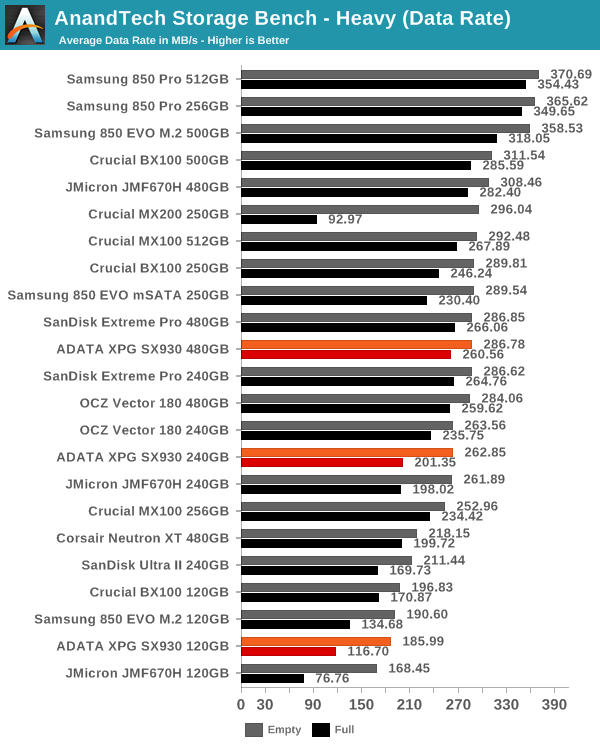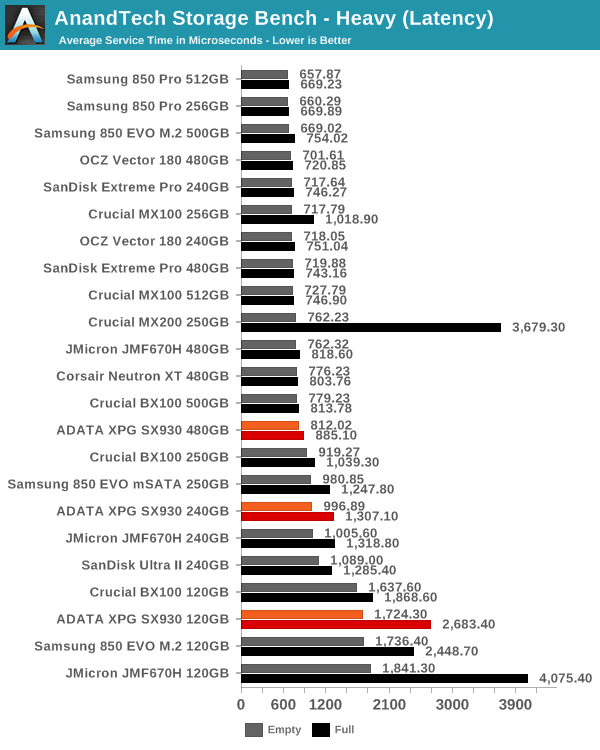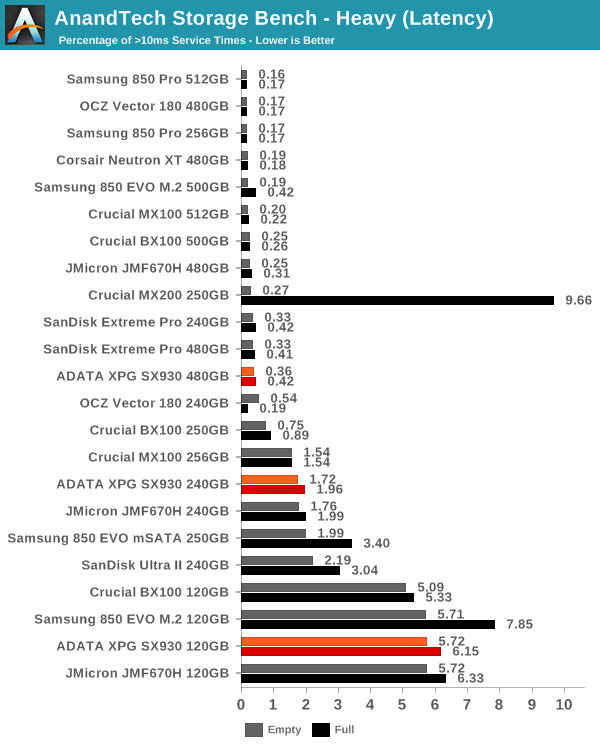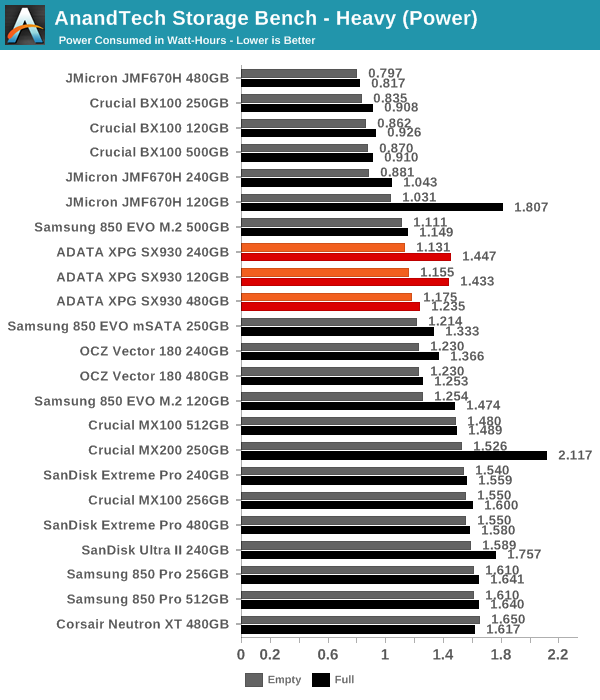ADATA XPG SX930 (120GB, 240GB & 480GB) SSD Review: JMicron JMF670H Debuts
by Kristian Vättö on July 16, 2015 10:00 AM ESTAnandTech Storage Bench - Heavy
While The Destroyer focuses on sustained and worst-case performance by hammering the drive with nearly 1TB worth of writes, the Heavy trace provides a more typical enthusiast and power user workload. By writing less to the drive, the Heavy trace doesn't drive the SSD into steady-state and thus the trace gives us a good idea of peak performance combined with some basic garbage collection routines. For full details of the test, please refer to the this article.

In our Heavy trace the SX930 is an average performer. To be frank, the JMF670H doesn't seem to have enough juice to go head to head with the 850 EVO and BX100, which is a shame because it leaves price as the only competitive advantage ADATA can have.

Surprisingly the 240GB model experiences more >10ms IOs in our Heavy trace than in The Destroyer. I would speculate this is due to the SLC cache filling up because the Heavy trace is more peak IO focused, whereas The Destroyer is built more for sustained performance, so it may be that in The Destroyer the controller just bypasses the SLC cache at some point and writes directly to MLC. In any case, optimizations are certainly needed to improve performance.

Power consumption, on the other hand, is relatively good. It's not BX100-level, but compared to some other high-end SSDs the SX930 has a more efficient power profile.











67 Comments
View All Comments
dada121 - Thursday, July 16, 2015 - link
First to take the throne,Refuge - Thursday, July 16, 2015 - link
can't wait for NVMe to give us some space to stretch our legs again! :)Stochastic - Thursday, July 16, 2015 - link
Just how much of an impact are NVMe drives expected to have on light tasks, e.g. boot times, application and game load times, etc. Could the average consumer benefit from a move to ultra high performance NVMe drives, or are the benefits limited to power users?Refuge - Thursday, July 16, 2015 - link
It is definitely more limited to power users. Especially until NVMe support and drives go down in costs. Right now it is enterprise or enthusiast only.But that is just par for the course. Software will be developed to use the extra horsepower one day, but not until after that level of performance is much more common place.
SATA6 SSD's will be perfect for regular consumers for years to come. But I see in a couple years especially with how graphics resolutions are going through the roof that Gamers will start finding a use for the extra bandwidth once 4k gaming is mainstream and texture packs start to explode like they did back in the 90's.
Remember when a 16g HDD running at 5400 RPM was the SHIT!?
TelstarTOS - Tuesday, July 21, 2015 - link
Yeah, in those times i had SCSI :)Adding-Color - Thursday, July 16, 2015 - link
They could be useful for video editing and other stuff that profits from fast sequential reads/writes.For games not so much. Most games appear to be CPU limited not SSD disk limited (for load times, when you are using a SSD) and a recent review (forgot the link) showed almost no load times improvement using a 2GB/s NVME Pcie SSD compared to a 500MB/s SATA SSD.
From a power and and efficiency standpoint NVME should have less latency and less lower consumption.
Impulses - Thursday, July 16, 2015 - link
Content creation tasks, even with photos instead of video, can already benefit greatly from NVMe or M2/PCI-E in general... I'm getting a smaller M2 Samsung drive as soon as I have a mobo that supports it (Skylake?), not sure I see myself going for a large one until prices drop well under $1/GB tho, and that'll take a while.For a power user I think an M2/PCI-E SSD for OS/apps/scratch space + large SATA SSD drive/array for data will soon supplant the SATA SSD + HDD setups... But M2/PCI-E will be like the Raptors of the SSD world.
AnnonymousCoward - Thursday, July 16, 2015 - link
Stochastic, you won't find the answer here, since AT doesn't do real world SSD testing.benzosaurus - Sunday, July 19, 2015 - link
Half of their benchmarks are literally recordings of the writes generated by doing real world things.AnnonymousCoward - Sunday, July 19, 2015 - link
Irrelevant. Stochastic asked how boot times and app load times compare.